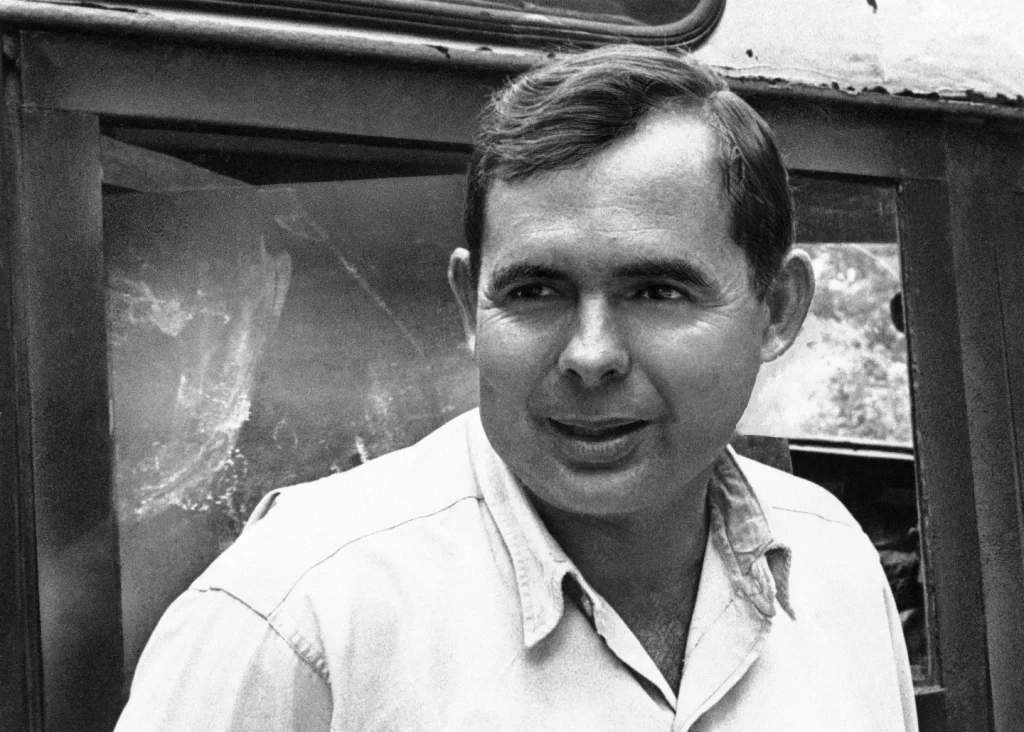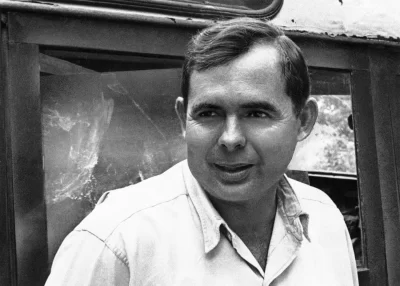
NEW YORK — Patrick Hemingway, the last surviving child of Ernest Hemingway who was inspired by his father to spend years in Africa and later oversaw numerous posthumous works by the Nobel laureate, died Tuesday at age 97.
Hemingway, the second of the author’s three sons, died at his home in Bozeman, Montana, his grandson, Patrick Hemingway Adams, confirmed in a statement.
“My grandfather was the real thing: a larger than life paradox from the old world; a consummate dreamer saddled with a scientific brain. He spoke half a dozen languages and solved complicated mathematical problems for fun, but his heart truly belonged to the written and visual arts,” Adams said.
While brother Gregory Hemingway had a deeply troubled relationship with his famous parent, Patrick Hemingway spoke proudly of his background and welcomed the chance to bring up the family name or get behind a project he thought could sell or attract critical attention. In the 2022 book “Dear Papa: The Letters of Patrick and Ernest Hemingway,” father and son share stories of hunting and fishing and express mutual affection, with the author telling Patrick that “I would rather fish with you and shoot with you than anybody that I have ever known since I was a boy and this is not because we are related.”
As an executor of his father’s estate, Patrick Hemingway approved reissues of such classics as “A Farewell to Arms” and “A Moveable Feast,” featuring revised texts and additional commentary from the author’s son and others. The estate also unsettled Hemingway admirers by expanding beyond books and offering a line of products that included clothing, eyewear, rugs and “Papa’s Pilar Rum.”
Patrick’s most ambitious undertaking was the editing of “True at First Light,” a fictionalized account of Ernest Hemingway’s time in Africa in the mid-1950s that the author left unfinished at the time of his death. Patrick assembled the 1999 release from some 800 pages of manuscripts, cutting the length by more than half. “True at First Light” was highly anticipated, but ended up disappointing readers and critics, some of whom faulted Patrick for exploiting the family name.
Asked by NPR if he read his father’s work, Patrick replied: “Pretty often, because I have a commercial interest. … I have to read it in order to be competent in the marketing of it and the management of it.”
Hemingway managed a long life in a family haunted by suicide and mental illness: Ernest Hemingway’s father, Clarence, killed himself in 1928, and the author did the same in 1961. Gregory Hemingway suffered from alcoholism and depression and died in a jail cell in 2001 after being arrested for indecent exposure. Patrick’s half-niece, the actor and model Margaux Hemingway, died from an overdose of phenobarbital in 1996. (Jack Hemingway, the eldest son, died in 2000).
Inheriting his father’s round face and stocky build, Patrick Hemingway was born in Kansas City, Missouri, to Ernest Hemingway and the second of his four wives, Pauline Pfeiffer. Because the author rarely stayed in one place for an extended time, the Hemingways lived everywhere from Cuba and Spain to Wyoming and Key West, Florida during Patrick’s childhood (Ernest and Pauline divorced in 1940). Patrick Hemingway would recall his father’s various “trophy mounts” of animals hunted down on safari and how they were “tastefully distributed throughout every room” of their Key West house, including a wildebeest that hung in the bedroom of Patrick and Gregory.




